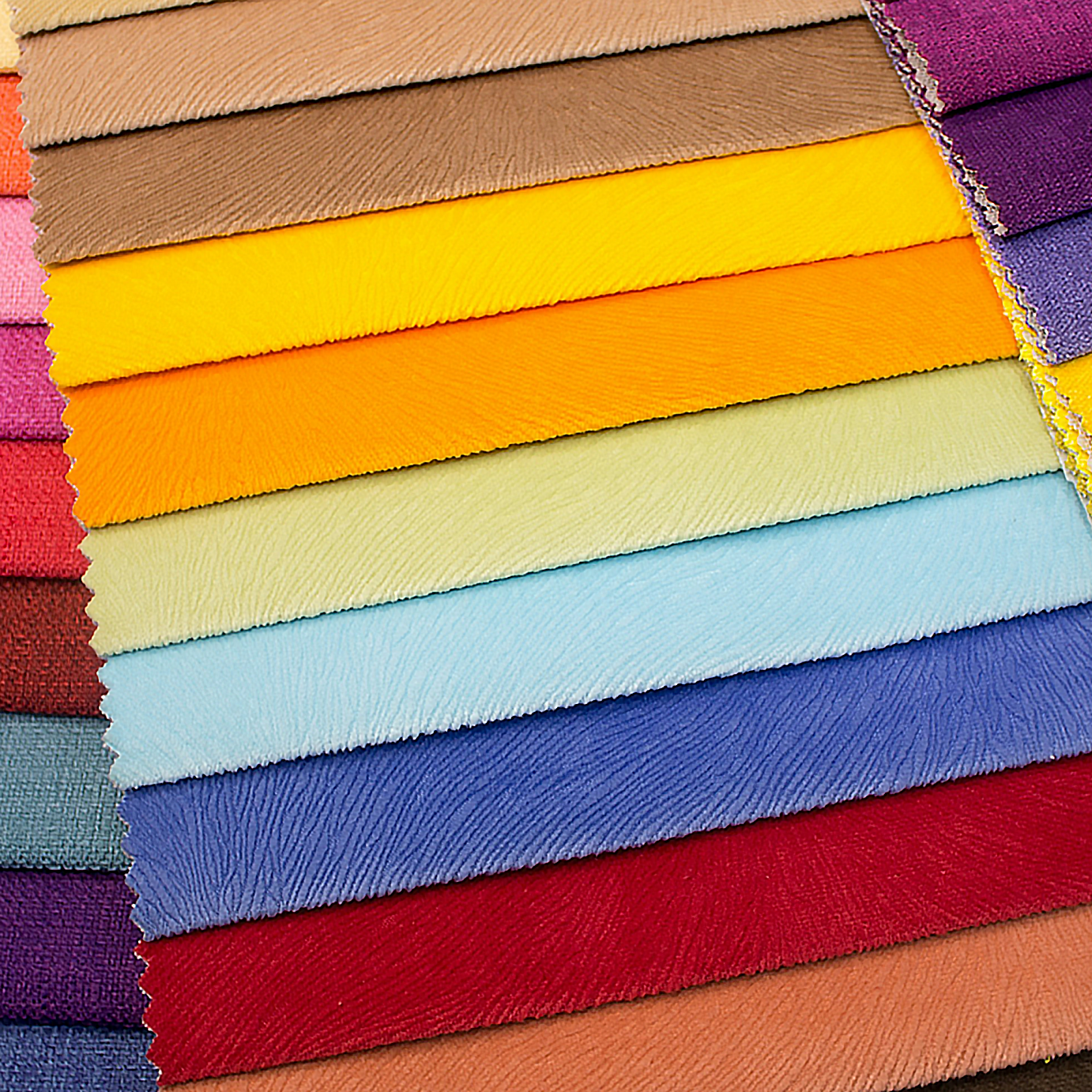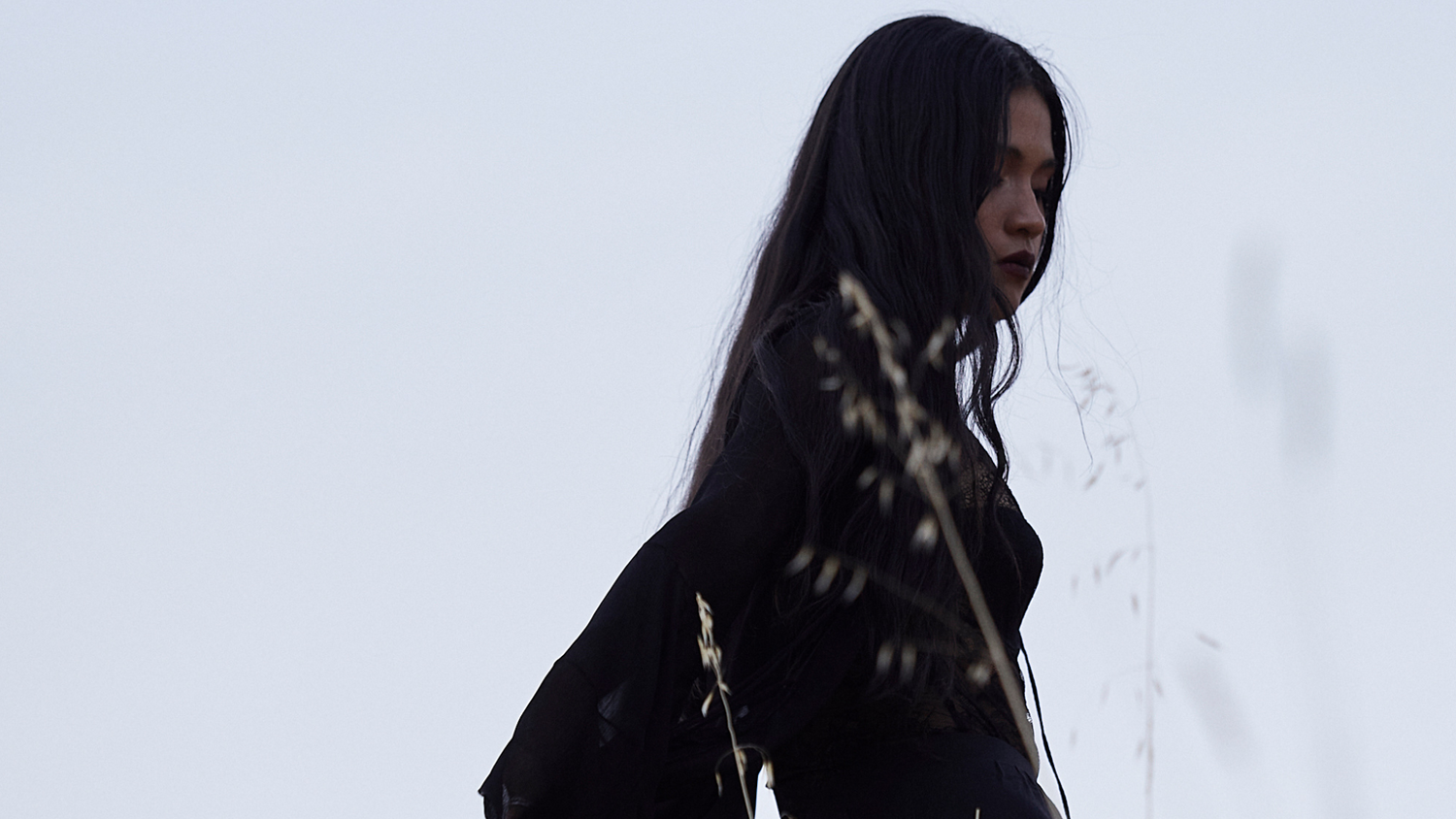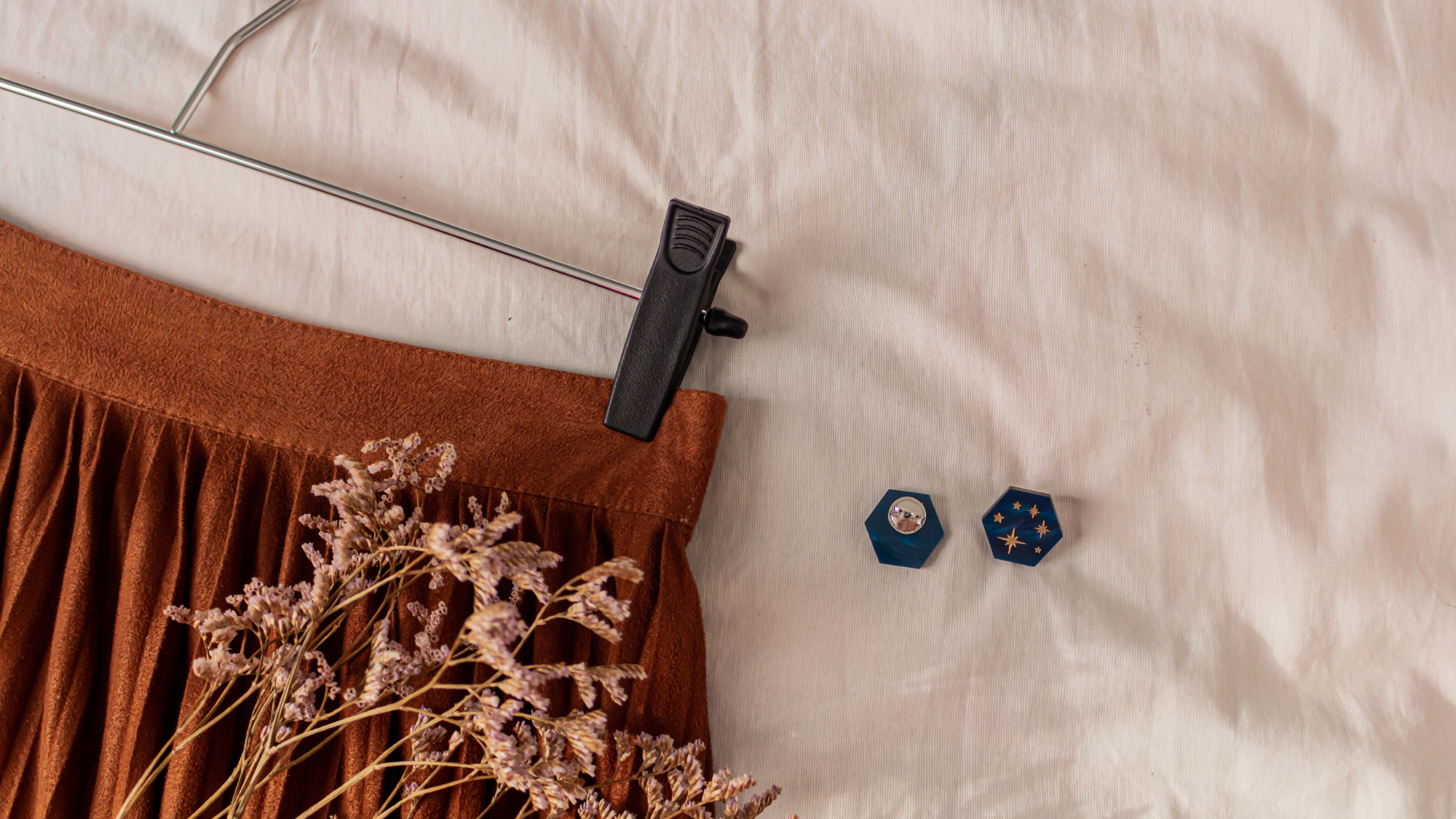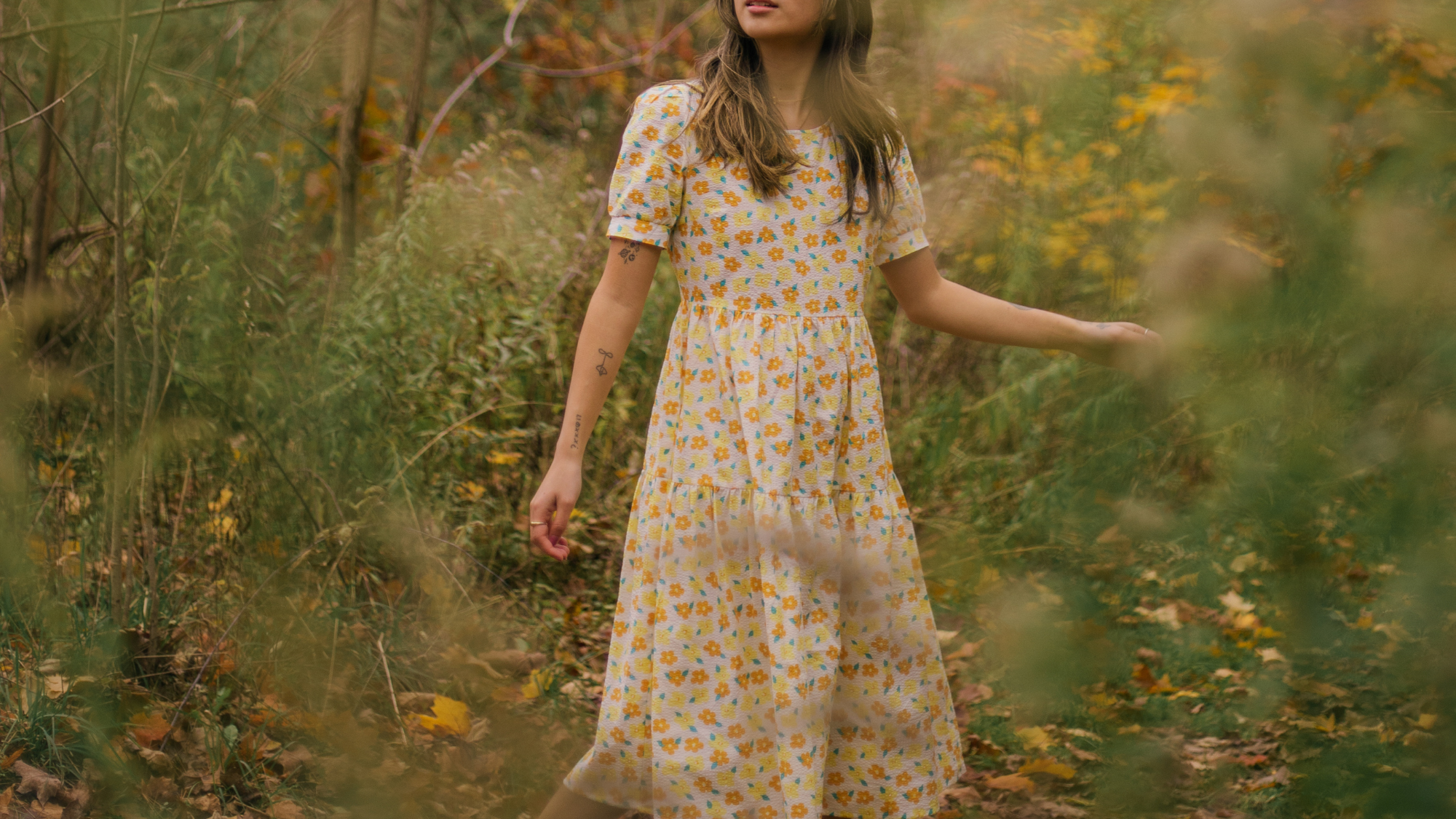
As the days grow shorter and the nights longer, it's the perfect moment to delve into the world of dark romance, mysterious charm, and the allure of all things occult. Whether you're an ardent practitioner of the craft or simply someone who appreciates the aesthetic, this blog post is your guide to navigating the fabrics of the whimsigoth aesthetic. From the colors that evoke autumnal magic to the materials that whisper secrets, and the accessories that cast their own spell, we'll explore how to infuse your autumn wardrobe with a touch of otherworldly elegance.
What is whimsigoth fashion?
Evan Collins, an architectural designer and co-founder of the Consumer Aesthetics Research Institute, coined the term "whimsigoth" by combining "whimsical" and "gothic". He first used this term to describe decor that had moody, dark, yet playful elements in the late 80s and early 90s. Collins grouped these styles together as "whimsical mystical gothic celestial," which was later shortened to "whimsigoth." The term has since made its way to TikTok, where users use it to describe the dark, witchy, goth-adjacent fashion that was popular during the same era.
What are some elements of the whimsigoth aesthetic?
Whimsical Elements: Whimsical typically refers to something that is playful, fanciful, or imaginative. In a whimsigoth aesthetic, you might find elements of fantasy, imagination, and creativity. This could manifest in the use of unconventional color palettes, fantastical motifs, or whimsical accessories.Gothic Influences: The "gothic" part of whimsigoth suggests a connection to the goth subculture or gothic style. This often involves elements like dark or muted colors (black, deep purples, rich reds), Victorian-inspired fashion, and a fascination with themes like death, the macabre, and the mysterious.Unique Fashion Choices: Whimsigoth fashion might involve unique and individualistic clothing choices that blend elements of whimsy and goth. This could include outfits with elements like ruffled collars, corsets, lace, velvet, or unconventional accessories like top hats, goggles, or steampunk-inspired pieces.
Artistic Expression: A whimsigoth aesthetic might emphasize artistic expression, allowing individuals to showcase their creativity through their clothing, makeup, and even their living spaces. This could involve DIY projects, handcrafted jewelry, or customized clothing.
Incorporation of Nature: Whimsigoth aesthetics might also incorporate elements of nature, such as botanical motifs or mystical forest themes, to add an enchanting and whimsical touch to the overall style.
Dark and Dreamy Atmosphere: A whimsigoth space, whether it's a room or an entire home, might feature dark, dreamy, or otherworldly decor with elements like vintage furniture, antique curiosities, and imaginative artwork.
Remember that aesthetics can vary widely between individuals, and personal interpretation and creativity play a significant role in defining and expressing one's style.
What are some fabrics used in the whimsigoth aesthetic?
Fabrics used in the whimsigoth aesthetic often combine whimsy and gothic style elements, creating a unique and visually intriguing look. While individual preferences may vary, here are some fabrics commonly associated with the whimsigoth aesthetic.
Lace: Lace is a staple fabric in gothic and Victorian-inspired fashion. It adds a delicate, intricate, and somewhat mysterious element to clothing. In the whimsigoth aesthetic, lace might be used in dresses, blouses, gloves, or accessories.
Velvet: Velvet is known for its luxurious and rich texture. It often appears in dark and jewel-toned colors, making it a popular choice for whimsigoth fashion. Velvet dresses, capes, or corsets can add a touch of opulence to the look.
Tulle: Tulle is a lightweight and sheer fabric that is often used to create voluminous skirts and dresses. In the whimsigoth style, tulle might be incorporated into layered skirts or petticoats, adding a dreamy and ethereal quality to outfits.
Satin: Satin is another fabric associated with elegance and luxury. It has a smooth and shiny surface that can be used for dresses, gloves, or accessories in whimsigoth fashion.
Silk: Silk is a versatile fabric that can be used to create both whimsical and gothic elements. It can be used for flowing gowns, scarves, or drapery in whimsigoth spaces.
Chiffon: Chiffon is a lightweight and semi-sheer fabric that can add a romantic and delicate touch to clothing. It is often used for sleeves, overlays, or veils in whimsigoth attire.
Zelouf Stretch Lace Fabric with Scallop in Black
Brocade: Brocade is a heavy, decorative fabric with raised patterns woven into it. It is often associated with historical and opulent fashion. In whimsigoth style, it might appear in corsets, vests, or coats.
Mesh: Mesh stockings or accessories can add a bold and edgy element to whimsigoth outfits. They provide a contrast to the more delicate fabrics like lace and tulle.
Organza: Organza is a sheer and lightweight fabric that can be used for layering and adding a touch of whimsy to an outfit. It can be used for overlays on dresses or blouses.
Floral Prints: Floral-printed fabrics, especially in dark or muted colors, can be used to create a whimsical and gothic fusion. These prints might appear on dresses, skirts, or accessories.
In whimsigoth fashion, the key is often in combining and layering these fabrics to create a unique and enchanting look that blends the playful with the darkly romantic. Individual creativity and customization also play a significant role in crafting the whimsigoth style, allowing for a wide range of fabric choices and interpretations.
Where can I buy whimsigoth fabrics?
At Zelouf Fabrics, we have a wide selection of all things whimsigoth available for wholesale purchase or by-the-yard. Check out our velvet, lace, satin collections and more on our online store.






